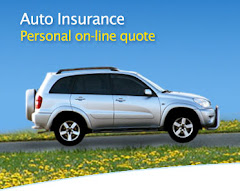Does Your Occupation Affect Your Auto Insurance Rate?
Think your occupation does not affect your auto insurance rate - think again! In Insurance.com's 2006 Occupation Report, results show that your occupation can greatly impact your car insurance premium.
Compiled from data from their partnering auto insurance companies, Insurance.com's report shows that scientists, pilots/navigators and actors/performers/artists pay the lowest insurance rates at an average of $935.76 per year. Attorneys/lawyers/judges, executives and business owners pay the highest insurance rates at an average of $1,383.63 per year.
Why such a big difference between occupations? According to David Roush, CEO of Insurance.com, attorneys/lawyers/judges, executives and business owners have highly stressful jobs, which require them to spend more time in their cars and talk more frequently on their cell phones than the average driver. "Taking all of these factors into account, you can see why some occupations are coined as "high-risk" and typically pay more for auto insurance then others," stated Roush.
As for scientists, pilots/navigators and actors/performers/artists, Roush says that there are a number of reasons why these occupations pay less for auto insurance. For one, scientists are viewed as being very meticulous and detailed-oriented people, which translates to good driving habits on the road. This outstanding attention to detail typically means scientists are safer drivers, resulting in lower auto insurance premiums.
The same goes for pilots and navigators whose jobs require them to be focused on the safety and wellbeing of others - skills that are often transferred over to their driving habits as well. "Pilots and navigators are often very safe drivers because their driving record not only impacts their personal life, but also their professional life," noted Roush. "If a pilot or navigator was to get into an accident or receive a DUI, their career opportunities would be restricted or even worse, eliminated."
Actors, performers and artists are also at the lower end of insurance premiums because their jobs require them to work in the city, where they are more apt to commute via train or bus to work, versus driving - limiting their time in the car and reducing their chance of getting into a car accident.
However, receiving discounts on auto insurance is not a new concept. For years, insurance companies have been giving discounts to members of "affinity groups," such as AARP, AAA, alumni groups and other associations. These discounts are just now being extended to certain occupations as well, noted Roush.
Wonder if your occupation can save you money on your auto insurance? To find out, simply logon to Insurance.com's auto insurance comparison application. Here you will be able to evaluate multiple rates from best-in-class insurance providers - helping you find the best auto insurance rate and best professional discount for your budget.
To see where your occupation falls in the Insurance.com's 2006 Occupation Report, see the table below:
Rank (lowest to highest) | Occupation | Average Premium |
| 1 | Scientist | $870.20 |
| 2 | Retired | $917.63 |
| 3 | Currently not working | $934.10 |
| 4 | Pilot/Navigator | $965.94 |
| 5 | Disabled | $968.14 |
| 6 | Actor/Performer/Artist | $971.10 |
| 7 | Librarian/Historian | $1,008.86 |
| 8 | Farmer | $1,015.62 |
| 9 | Student | $1,028.96 |
| 10 | Public Official | $1,068.83 |
| 11 | Design Services | $1,070.87 |
| 12 | Waiter/Bartender/Host | $1,071.25 |
| 13 | Engineer | $1,087.56 |
| 14 | Athlete | $1,088.29 |
| 15 | Homemaker | $1,091.73 |
| 16 | Instructor/Coach/TA | $1,098.86 |
| 17 | Breeder/Groomer/Trainer | $1,102.83 |
| 18 | Clerk/Cashier | $1,105.93 |
| 19 | Computer/Math/Research | $1,110.15 |
| 20 | Chef/Baker | $1,114.89 |
| 21 | Teacher/Dean/Educ Degree | $1,121.15 |
| 22 | Machine Operator | $1,126.34 |
| 23 | Architect | $1,130.71 |
| 24 | Machinist/Toolmaker | $1,131.33 |
| 25 | Marketing/Advertising | $1,135.33 |
| 26 | Cleaning/Janitorial | $1,136.02 |
| 27 | Mechanic | $1,138.33 |
| 28 | Repair/Maintenance | $1,142.89 |
| 29 | Null | $1,146.46 |
| 30 | Military Officer | $1,147.96 |
| 31 | Tradesman/Manufacturer | $1,150.80 |
| 32 | Customer Service | $1,151.92 |
| 33 | Other - Prof w/Coll Degree | $1,156.33 |
| 34 | Construction/Skilled Worker | $1,159.93 |
| 35 | Technician | $1,160.09 |
| 36 | Other - No College Degree | $1,181.74 |
| 37 | Bank/Clerical/Office Staff | $1,190.75 |
| 38 | Nanny/Caretaker | $1,193.97 |
| 39 | Military E5+ | $1,196.27 |
| 40 | Admin. Asst./Secretary | $1,209.26 |
| 41 | Clergy | $1,209.72 |
| 42 | Driver | $1,209.94 |
| 43 | Health Care Worker | $1,212.75 |
| 44 | Finance/Ins Prof w/Degree | $1,213.17 |
| 45 | Barber/Beautician | $1,214.47 |
| 46 | Sales/Real Estate | $1,215.04 |
| 47 | Government GS1-GS5 | $1,215.50 |
| 48 | Self Employed | $1,217.59 |
| 49 | Professional Worker | $1,219.49 |
| 50 | Security/Prison Worker | $1,227.74 |
| 51 | Administrator | $1,229.80 |
| 52 | Supervisor/Asst. Manager | $1,231.67 |
| 53 | Manager/Director | $1,240.14 |
| 54 | Government GS6 or higher | $1,262.45 |
| 55 | Police/Fire - other | $1,264.62 |
| 56 | Medical Doctor/Dentist | $1,277.63 |
| 57 | Military E1 to E4 | $1,294.69 |
| 58 | CPA/Comptroller | $1,301.36 |
| 59 | Police/Fire - Lt/Cptn/Chief | $1,314.88 |
| 60 | Nurse | $1,316.40 |
| 61 | Attorney/Lawyer/Judge | $1,370.39 |
| 62 | Executive | $1,375.38 |
| 63 | Business Owner | $1,405.11 |





